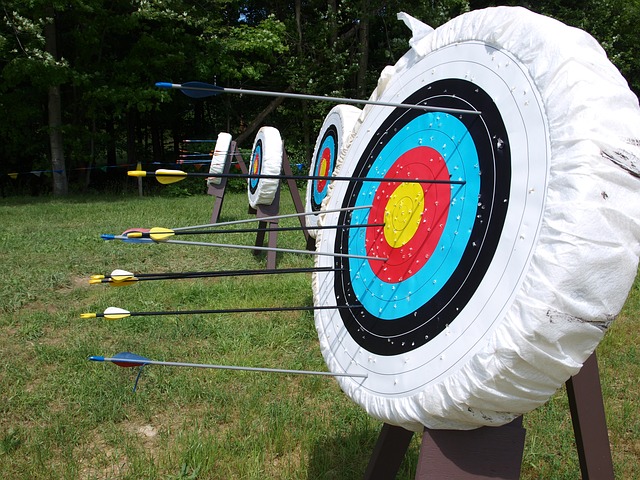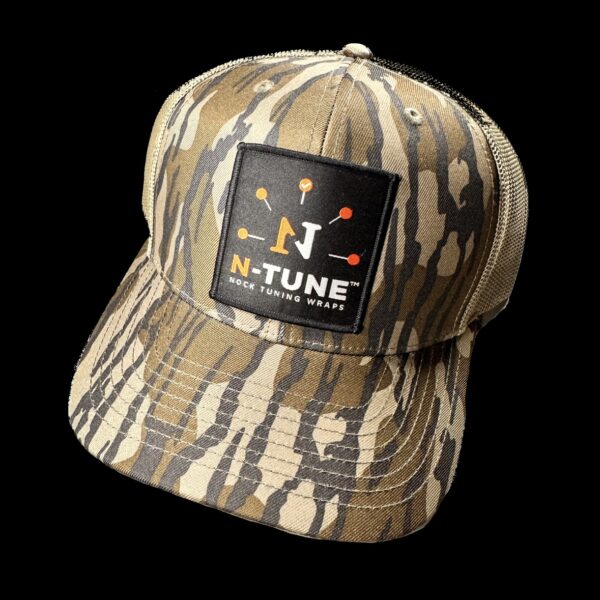Are you wondering how to determine the draw length you need for bowhunting? Check out our draw length calculator below to easily and quickly determine it!
What is draw length?
With traditional bows, you can basically pull back as far as you are able, based on the draw weight of that particular bow. The same is true for a recurve bow.

Draw length is an extremely important component to good form and repeatable shot mechanics.
However, you will typically find that draw length is discussed in regards to compound bows. This is because a compound bow has a set maximum draw length, once you hit the “back wall” of the draw cycle (the back wall is the place in the draw cycle where you can no longer pull the bow any farther.)
How to find your draw length
Time needed: 1 minute
If you don’t want to use the N1 Outdoors draw length calculator above and instead want to figure your estimated draw length with good ‘ole mathematics, the first thing you need to do is measure your armspan (or wingspan).
- Spread out
First you need to determine your armspan. Simply spread out your arms (don’t over-stretch) with your palms facing forward.
- Measure
Measure the distance from the tip of one middle finger to the tip of the other middle finger.

- Do some old school calculating
Take the measurement from step 2 and divide it by 2.5. This will provide you with a fairly reliable estimate of your appropriate draw length. Check with your local bow shop to help you fine tune.
-

N1 Outdoors® N-Tune™ Nock Tuning Reflective Arrow Wraps – Dual Fade (Various)
Price range: $18.99 through $27.99 Select options This product has multiple variants. The options may be chosen on the product page -

N1 Outdoors® N-Tune™ Nock Tuning Reflective Arrow Wraps – Thwack’Em™
Price range: $18.99 through $27.99 Select options This product has multiple variants. The options may be chosen on the product page -

N1 Outdoors® N-Tune™ Nock Tuning Reflective Arrow Wraps – Old Bloody Glory™
Price range: $18.99 through $27.99 Select options This product has multiple variants. The options may be chosen on the product page
Here’s what the Archery Manufacturer’s and Mechants Organization (now the Archery Trade Association) says about draw length:
“Draw length is a specified distance, or the distance at the archer’s full draw, from
AMO Standards Committee FIELD PUBLICATION FP-3, 2000
the nocking point on the string to the pivot point of the bow grip (or the theoretical vertical projection of a tangency line to the pivot point parallel to the string)
plus 1 3/4”. Draw length from pivot point shall be designed at DLPP and shall be
called TRUE DRAW LENGTH.
EXAMPLE: 26 1/4” DLPP plus 1 3/4” is the equivalent of 28” draw”
So, by this definition, if you have a “28-inch draw length”, that means that at full draw the distance from the deepest point of the grip to the nocking point of the string would be 26.25 inches.
Draw Length vs. Arrow Length
It’s important not to confuse draw length with arrow length. While they may be similar lengths, they are measured differently.
Arrow length is measured from the front end of the arrow shaft (not including the broadhead or field point) to the throat of the nock.
Your arrow length can vary depending on what you are trying to achieve regarding the FOC and spine of your arrow. (Spine is how much your arrow flexes at a set length with a set weight attached. More on arrow spine here.)

Arrow length is the measurement from the end of the arrow shaft to the throat, or groove, of the arrow’s nock.
-

The N1 Outdoors® “Rackingham™” Whitetail Tee
Price range: $28.99 through $32.99 Select options This product has multiple variants. The options may be chosen on the product page -

“Edge of the Outdoors™” Tee featuring Tuffhead Evolution Broadhead (Various)
Price range: $24.99 through $28.99 Select options This product has multiple variants. The options may be chosen on the product page -

N1 Outdoors® Just Pass’N Through™ Bowhunting Tee
Price range: $24.99 through $28.99 Select options This product has multiple variants. The options may be chosen on the product page
What is “full draw?”
When it comes to archery and bowhunting in regards to compound bows, “full draw” is when you have reached the farthest point that the bow can go in the draw cycle, reaching your anchor point.
What is an “anchor point?”
The “anchor point” is a reference point for an archer or bowhunting that they can “anchor” the bow string or the shooting hand when they are at full draw.
An anchor point helps make the archer’s shot repeatable, so that shot consistency can be achieved.
For example, many bowhunters will anchor the knuckle of their index finger just below their ear lobe behind the jaw.
Others may use a “kisser button,” (of all the parts on a bow, this might be the most memorable) which is usually a small disc that is installed on the bow string, above the nocking point.

Many bowhunters will use an anchor point just below the ear, resting the knuckle of the index finger in the area right behind the jaw.
Conclusion
As you can see, draw length measurement is a critical part of becoming a good archer. We hope this article and our draw length calculator has been helpful to you!


























